Temperature Measurement of a Bullet in Flight
Abstract
:1. Introduction
2. Materials and Methods
2.1. Analytical Background
2.2. Experimental Measurement
3. Results and Discussion
4. Conclusions
Author Contributions
Funding
Conflicts of Interest
Appendix A
| Test Number | VI (m/s) | TI,1 (°C) | TI,2 (°C) | TI,3 (°C) |
|---|---|---|---|---|
| 1 | 360 | 27.4 | 50.6 | 28.9 |
| 2 | 354 | 30.2 | 40.1 | 35.7 |
| 3 | 358 | 26.3 | 43.7 | 26.3 |
| 4 | 354 | 25.8 | 43.4 | 28.0 |
| 5 | 356 | 29.3 | 52.3 | 25.1 |
| 6 | 359 | 27.4 | 47.8 | 25.3 |
| 7 | 353 | 33.1 | 52.4 | 27.8 |
| 8 | 354 | 32.7 | 53.4 | 29.3 |
| 9 | 353 | 32.5 | 54.3 | 34.4 |
| 10 | 350 | 46.6 | 51.2 | 49.3 |
| 11 | 352 | 40.6 | 44.9 | 42.1 |
| Average | 355 | 32.0 | 48.6 | 32.0 |
| Test Number | VI (m/s) | TI,1 (°C) | TI,2 (°C) | TI,3 (°C) |
|---|---|---|---|---|
| 1 | 295 | 27.4 | 80.9 | 38.1 |
| 2 | 293 | 26.2 | 82.0 | 26.9 |
| 3 | 293 | 27.1 | 83.2 | 25.6 |
| 4 | 288 | 27.1 | 89.4 | 26.2 |
| 5 | 288 | 28.5 | 84.4 | 31.9 |
| 6 | 285 | 30.4 | 94.1 | 34.5 |
| Average | 290 | 27.8 | 85.7 | 30.5 |
| Test Number | VI (m/s) | TI,1 (°C) | TI,2 (°C) | TI,3 (°C) |
|---|---|---|---|---|
| 1 | 756 | 43.6 | 45.7 | 41.1 |
| 2 | 745 | 52.3 | 71.7 | 45.0 |
| 3 | 750 | 42.6 | 48.5 | 43.6 |
| 4 | 749 | 41.0 | 49.6 | 42.6 |
| 5 | 756 | 44.8 | 76.7 | 42.3 |
| 6 | 748 | 51.6 | 97.2 | 50.7 |
| 7 | 756 | 48.6 | 69.2 | 48.3 |
| 8 | 748 | 55.8 | 63.3 | 53.3 |
| 9 | 757 | 45.0 | 64.5 | 49.5 |
| 10 | 754 | 49.5 | 62.9 | 50.4 |
| 11 | 753 | 45.7 | 68.6 | 45.9 |
| 12 | 754 | 48.9 | 67.8 | 47.7 |
| 13 | 754 | 47.7 | 67.1 | 54.7 |
| 14 | 754 | 44.7 | 73.9 | 48.7 |
| 15 | 753 | 49.9 | 69.2 | 45.3 |
| 16 | 754 | 48.5 | 76.1 | 46.1 |
| 17 | 754 | 47.3 | 51.6 | 50.8 |
| 18 | 752 | 55.1 | 49.3 | 47.2 |
| 19 | 758 | 46.9 | 48.8 | 51.5 |
| 20 | 753 | 53.1 | 51.9 | 49.1 |
| 21 | 756 | 48.0 | 47.4 | 47.5 |
| 22 | 753 | 50.1 | 65.6 | 58.8 |
| 23 | 754 | 52.4 | 62.0 | 54.7 |
| Average | 753 | 48.4 | 63.0 | 48.5 |
| Test Number | VI (m/s) | TI,1 (°C) | TI,2 (°C) | TI,3 (°C) |
|---|---|---|---|---|
| 1 | 798 | 64.3 | 68.7 | 49.3 |
| 2 | 796 | 56.5 | 73.6 | 63.4 |
| 3 | 802 | 52.0 | 56.1 | 53.7 |
| 4 | 799 | 64.4 | 70.6 | 54.2 |
| Average | 799 | 59.3 | 67.3 | 55.1 |
References
- Edelman, G.J.; Hoveling, R.J.M.; Roos, M.; Van Leeuwen, T.G.; Aalders, M.C.G. Infrared imaging of the crime scene: Possibilities and pitfalls. J. Forensic Sci. 2013, 58, 1156–1162. [Google Scholar] [CrossRef] [PubMed]
- Marguet, E.; Forterre, P. DNA stability at temperatures typical for hyperthermophiles. Nucleic Acids Res. 1994, 22, 1681–1686. [Google Scholar] [CrossRef] [PubMed] [Green Version]
- Karni, M.; Zidon, D.; Polak, P.; Zalevsky, Z.; Shefi, O. Thermal degradation of DNA. DNA Cell Biol. 2013, 32, 298–301. [Google Scholar] [CrossRef] [PubMed] [Green Version]
- Driessen, R.P.C.; Sitters, G.; Laurens, N.; Moolenaar, G.F.; Wuite, G.J.L.; Goosen, N.; Dame, R.T. Effect of temperature on the intrinsic flexibility of DNA and its interaction with architectural proteins. Biochemistry 2014, 53, 6430–6438. [Google Scholar] [CrossRef] [PubMed] [Green Version]
- Li, H.; Zhao, G.; He, L.; Mu, Y. High-speed data acquisition of the cooling curves and evaluation of heat transfer coefficient in quenching process. Measurement 2008, 41, 676–686. [Google Scholar] [CrossRef]
- Fang, X.; Jia, J.; Feng, X. Three-point bending test at extremely high temperature enhanced by real-time observation and measurement. Measurement 2015, 59, 171–176. [Google Scholar] [CrossRef]
- Gunduz, D.E.; Unver, A.; Orhan, F.; Ak, M.A. Aerodynamic heating effects on a flying object at high speeds. In Proceedings of the 2nd International Conference on Recent Advances in Space Technologies RAST 2005, Istanbul, Turkey, 9–11 June 2005; Institute of Electrical and Electronics Engineers (IEEE): Los Alamitos, CA, USA, 2006. [Google Scholar]
- Jaremkiewicz, M.; Taler, D.; Dzierwa, P.; Taler, D. Determination of transient fluid temperature and thermal stresses in pressure thick-walled elements using a new design thermometer. Energies 2019, 12, 222. [Google Scholar] [CrossRef] [Green Version]
- Goumopoulos, C. A high precision, wireless temperature measurement system for pervasive computing applications. Sensors 2018, 18, 3445. [Google Scholar] [CrossRef] [Green Version]
- Yan, D.; Yang, Y.; Hong, Y.; Liang, T.; Yao, Z.; Chen, X.; Xiong, J. Low-cost wireless temperature measurement: Design, manufacture, and testing of a PCB-based wireless passive temperature sensor. Sensors 2018, 18, 532. [Google Scholar] [CrossRef] [Green Version]
- Szklarski, A.; Świderski, W.; Machowski, B. Measuring temperature distribution on the surface of flying missiles. J. KONES Powertrain Transp. 2015, 22, 233–240. [Google Scholar] [CrossRef]
- Kurihara, D.; Gonzales, J.P.; Claucherty, S.L.; Kiritani, H.; Fujita, K.; Jemcov, A.; Nagai, H.; Sakaue, H. Sub-millimeter resolution pressure measurement on free flight model at Mach 1.5 using novel non-intrusive optical technique. Exp. Therm. Fluid Sci. 2021, 120, 110243. [Google Scholar] [CrossRef]
- Jianwei, L.; Wang, Q. Aircraft-skin infrared radiation characteristics modeling and analysis. Chin. J. Aeronaut. 2009, 22, 493–497. [Google Scholar] [CrossRef] [Green Version]
- Feng, Y. Influence of flight speed on temperature and infrared radiation characteristics of aircraft skin. In Proceedings of the 2016 3rd International Conference on Information Science and Control Engineering (ICISCE), Beijing, China, 8–10 July 2016; Institute of Electrical and Electronics Engineers (IEEE): Los Alamitos, CA, USA, 2016; pp. 988–992. [Google Scholar]
- Abukhshim, N.; Mativenga, P.; Sheikh, M. Heat generation and temperature prediction in metal cutting: A review and implications for high speed machining. Int. J. Mach. Tools Manuf. 2006, 46, 782–800. [Google Scholar] [CrossRef]
- Schreivogel, P.; Abram, C.; Fond, B.; Straußwald, M.; Beyrau, F.; Pfitzner, M. Simultaneous kHz-rate temperature and velocity field measurements in the flow emanating from angled and trenched film cooling holes. Int. J. Heat Mass Transf. 2016, 103, 390–400. [Google Scholar] [CrossRef] [Green Version]
- Celik, M.; Devendran, K.; Paulussen, G.; Pronk, P.; Frinking, F.; De Jong, W.; Boersma, B.J. Experimental and numerical investigation of contact heat transfer between a rotating heat pipe and a steel strip. Int. J. Heat Mass Transf. 2018, 122, 529–538. [Google Scholar] [CrossRef]
- Gajewski, T.; Sielicki, P.W. Experimental study of blast loading behind a building corner. Shock. Waves 2020, 30, 385–394. [Google Scholar] [CrossRef] [Green Version]
- Sielicki, P.W.; Łodygowski, T. Masonry wall behaviour under explosive loading. Eng. Fail. Anal. 2019, 104, 274–291. [Google Scholar] [CrossRef]
- Al-Rifaie, H.; Sumelka, W. Improving the blast resistance of large steel gates-Numerical study. Materials 2020, 13, 2121. [Google Scholar] [CrossRef]
- Sielicki, P.W.; Łodygowski, T.; Al-Rifaie, H.; Sumelka, W. Designing of blast resistant lightweight elevation system-Numerical study. Procedia Eng. 2017, 172, 991–998. [Google Scholar] [CrossRef]
- Szymczyk, M.; Nowak, M.; Sumelka, W. Numerical study of dynamic properties of fractional viscoplasticity model. Symmetry 2018, 10, 282. [Google Scholar] [CrossRef] [Green Version]
- Sielicki, P.W.; Sumelka, W.; Łodygowski, T. Close range explosive loading on steel column in the framework of anisotropic viscoplasticity. Metals 2019, 9, 454. [Google Scholar] [CrossRef] [Green Version]
- Pan, D.; Jiang, Z.; Chen, Z.; Gui, W.; Xie, Y.; Yang, C. Temperature measurement method for blast furnace molten iron based on infrared thermography and temperature reduction model. Sensors 2018, 18, 3792. [Google Scholar] [CrossRef] [PubMed] [Green Version]
- Pan, D.; Jiang, Z.; Chen, Z.; Gui, W.; Xie, Y.; Yang, C. Temperature measurement and compensation method of blast furnace molten iron based on infrared computer vision. IEEE Trans. Instrum. Meas. 2019, 68, 3576–3588. [Google Scholar] [CrossRef]
- Nellis, G.; Klein, S. Heat Transfer; Cambridge University Press: New York, NY, USA, 2009. [Google Scholar]
- Dixon, J.C. The Shock Absorber Handbook; Professional Engineering Publishing Ltd. and John Wiley and Sons, Ltd.: West Sussex, UK, 2007. [Google Scholar]
- Anderson, J.D., Jr. Hypersonic and High-Temperature Gas. Dynamics, 2nd ed.; American Institute of Aeronautics and Astronautics, Inc.: Reston, Virginia, 2006. [Google Scholar]
- Sielicki, P.W.; Ślosarczyk, A.; Szulc, D. Concrete slab fragmentation after bullet impact: An experimental study. Int. J. Prot. Struct. 2019, 10, 380–389. [Google Scholar] [CrossRef]
- Sielicki, P.W.; Pludra, A.; Przybylski, M. Experimental measurement of the bullet trajectory after perforation of a chambered window. Int. J. Appl. Glas. Sci. 2019, 10, 441–448. [Google Scholar] [CrossRef]
- Chybinski, M.; Polus, Ł.; Ratajczak, M.; Sielicki, P.W. The Evaluation of the fracture surface in the AW-6060 T6 aluminium alloy under a wide range of loads. Metals 2019, 9, 324. [Google Scholar] [CrossRef] [Green Version]
- Wolfe, W.L.; Zissis, G.J. The Infrared Handbook; Office of Naval Research: Washington, DC, USA, 1978.
- Wolfe, W.L. Handbook of Military Infrared Technology; Defense Technical Information Center (DTIC): Fort Belvoir, VA, USA, 1965.
- Bramson, M.A. Infrared Radiation; Springer Science and Business Media LLC: Berlin, Germany, 1968. [Google Scholar]
- Madding, R.P. Thermographic Instruments and Systems; University of Wisconsin-Extension, Department of Engineering & Applied Science: Madison, WI, USA, 1979. [Google Scholar]

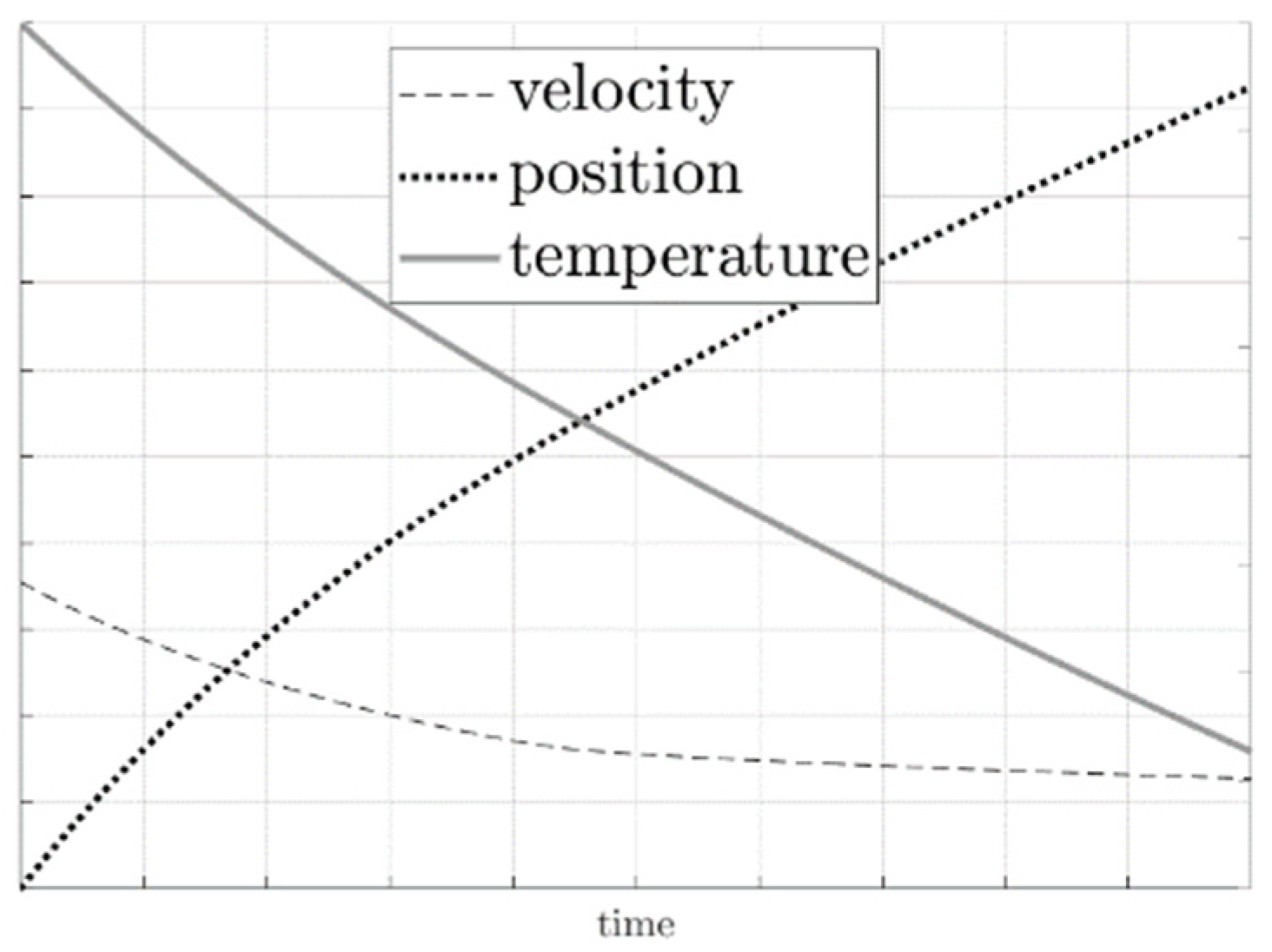

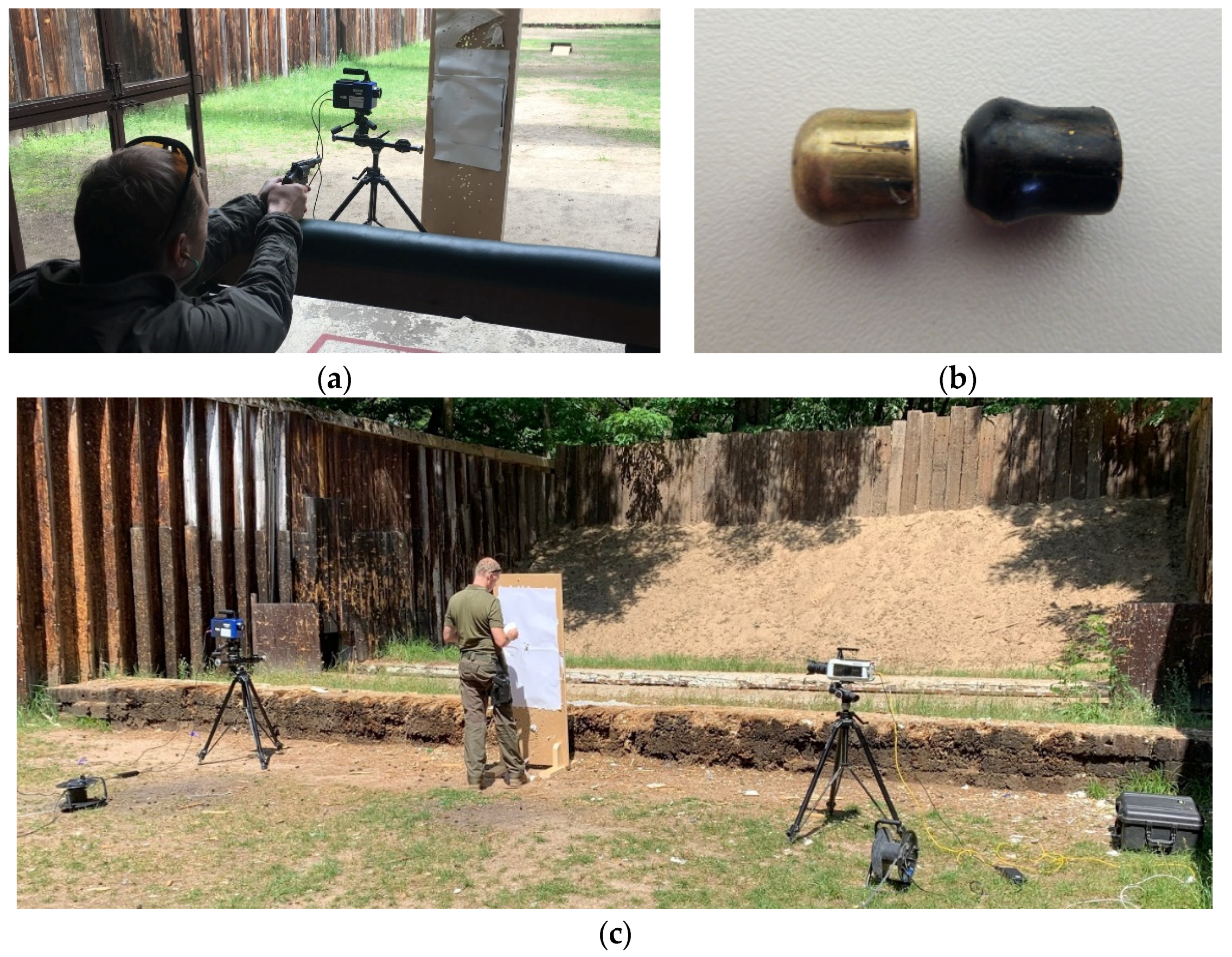
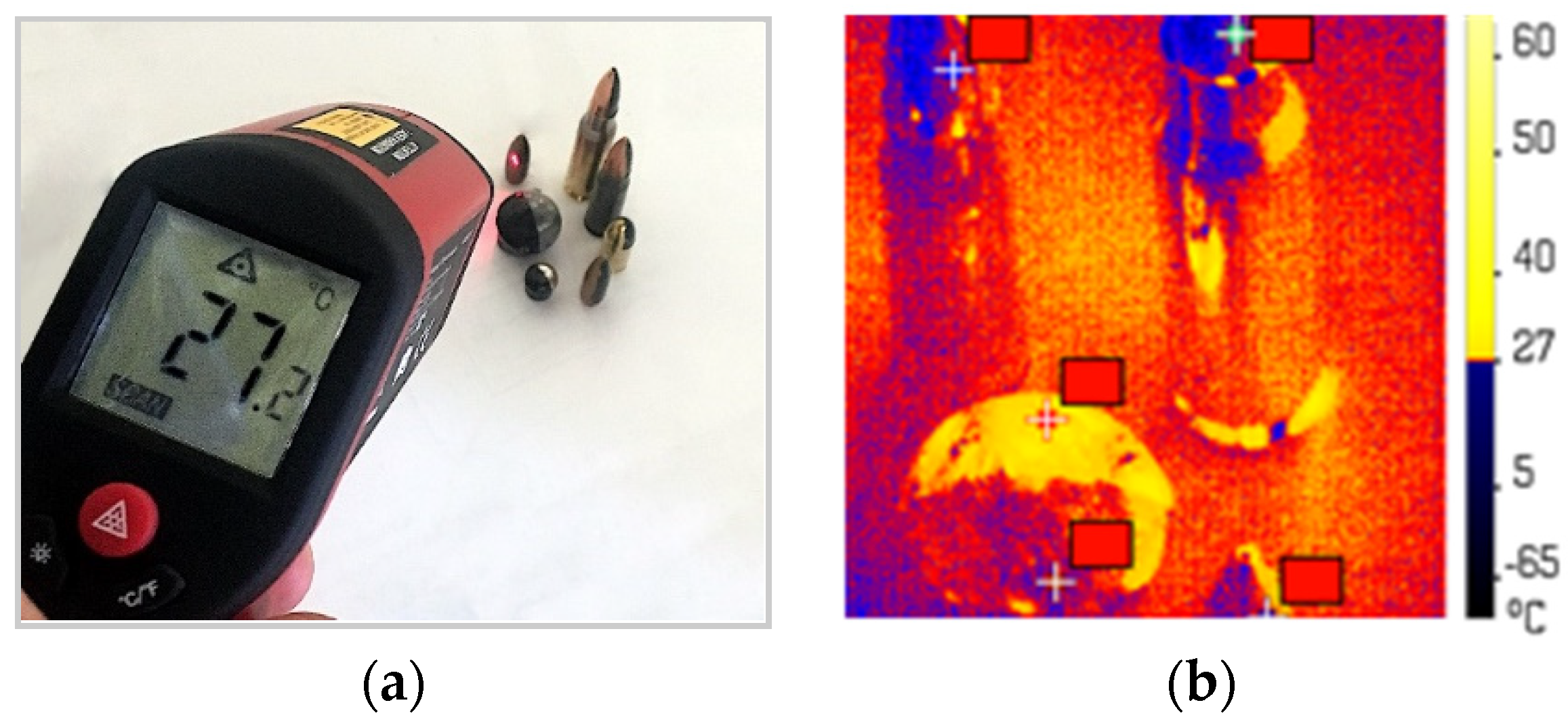
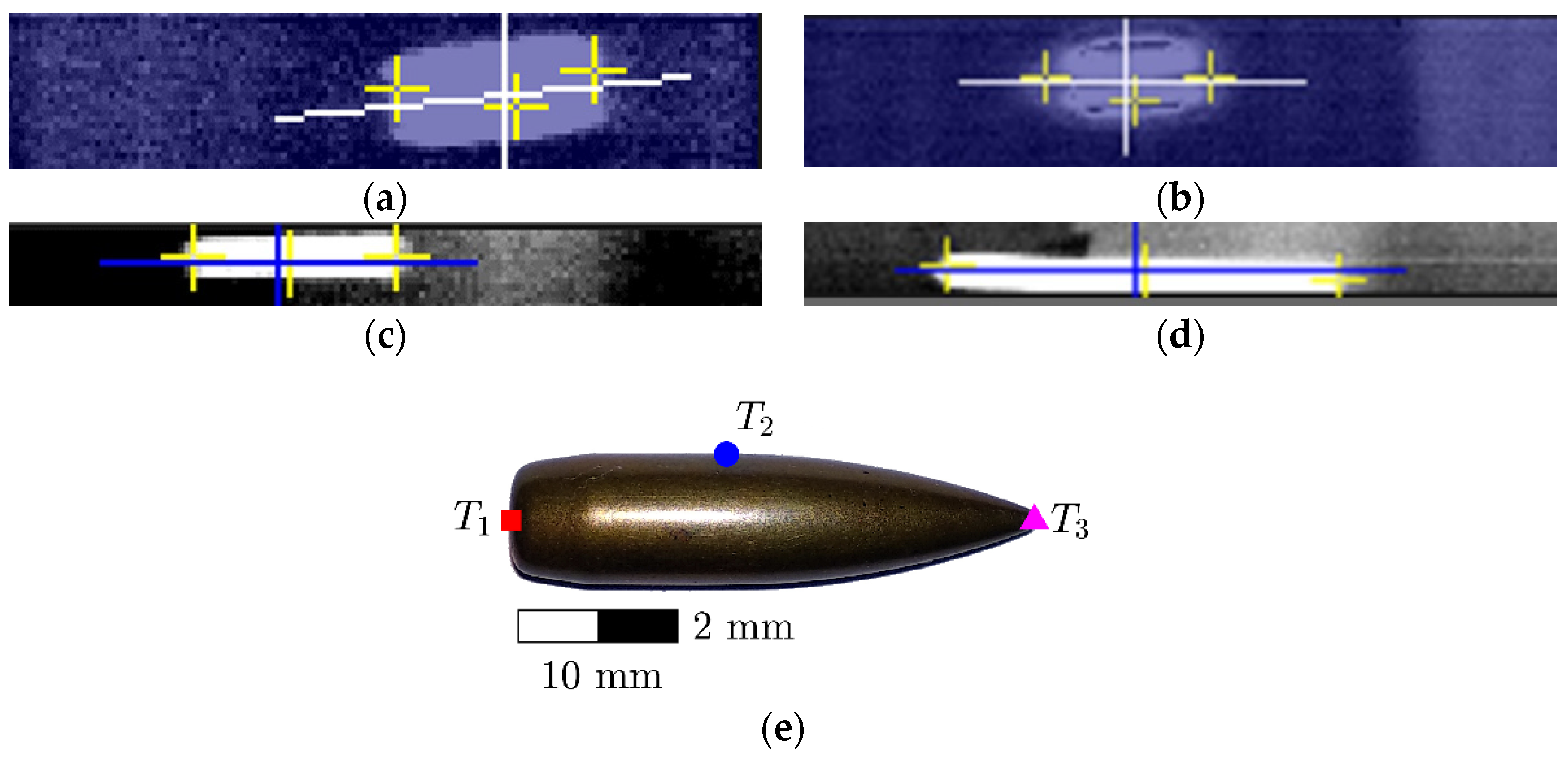
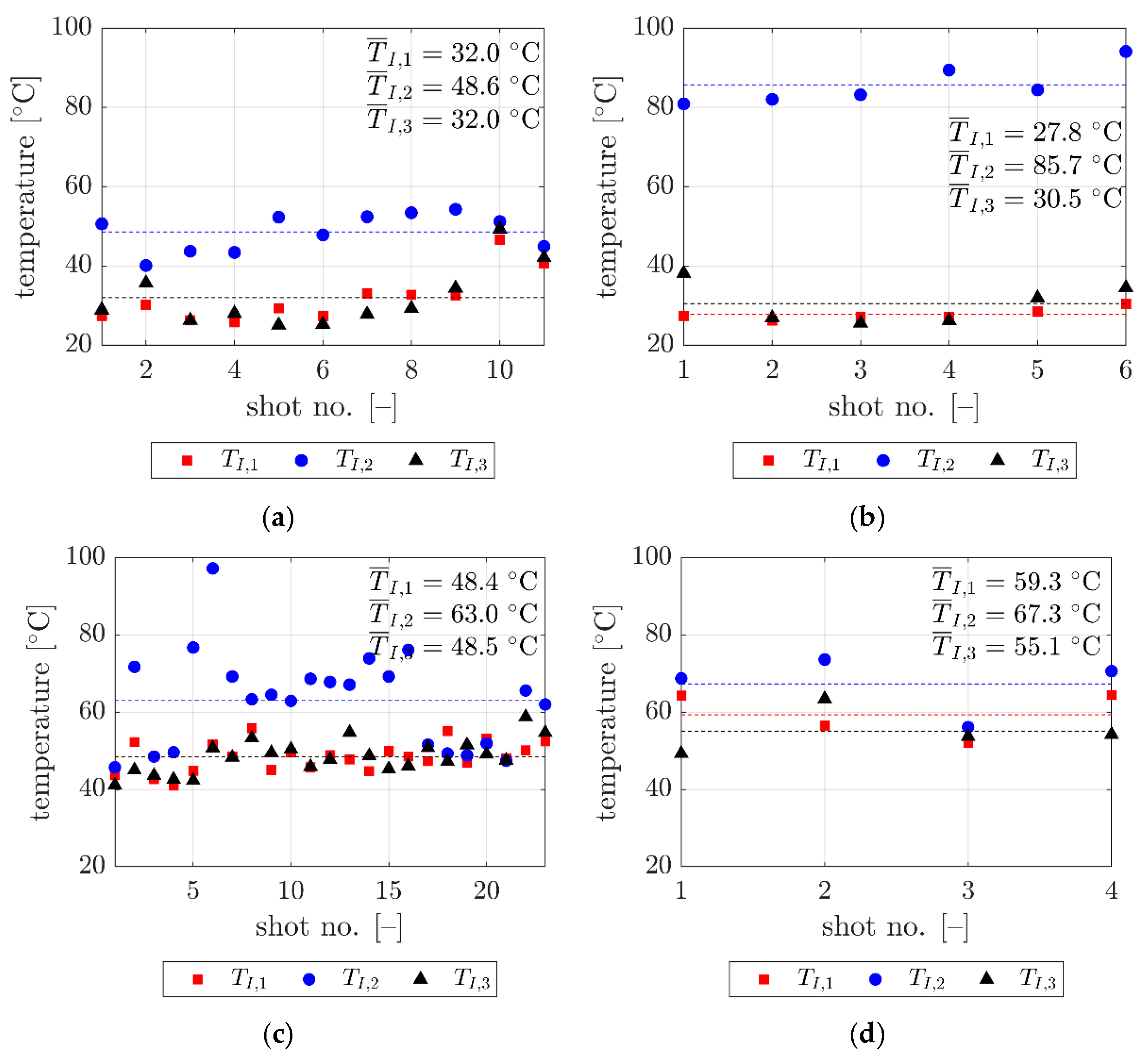

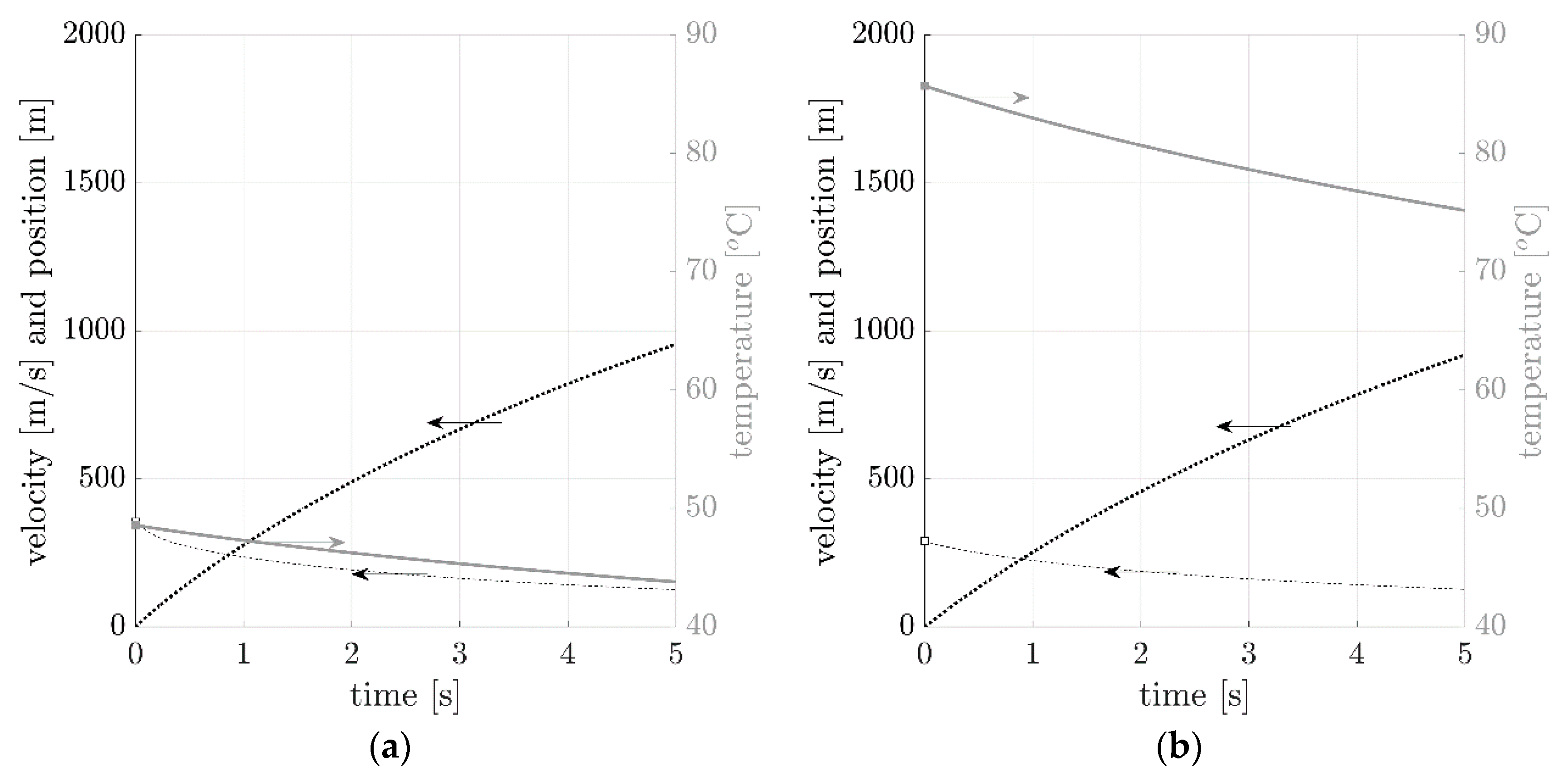

Publisher’s Note: MDPI stays neutral with regard to jurisdictional claims in published maps and institutional affiliations. |
© 2020 by the authors. Licensee MDPI, Basel, Switzerland. This article is an open access article distributed under the terms and conditions of the Creative Commons Attribution (CC BY) license (http://creativecommons.org/licenses/by/4.0/).
Share and Cite
Kerampran, C.; Gajewski, T.; Sielicki, P.W. Temperature Measurement of a Bullet in Flight. Sensors 2020, 20, 7016. https://doi.org/10.3390/s20247016
Kerampran C, Gajewski T, Sielicki PW. Temperature Measurement of a Bullet in Flight. Sensors. 2020; 20(24):7016. https://doi.org/10.3390/s20247016
Chicago/Turabian StyleKerampran, Corentin, Tomasz Gajewski, and Piotr W. Sielicki. 2020. "Temperature Measurement of a Bullet in Flight" Sensors 20, no. 24: 7016. https://doi.org/10.3390/s20247016





